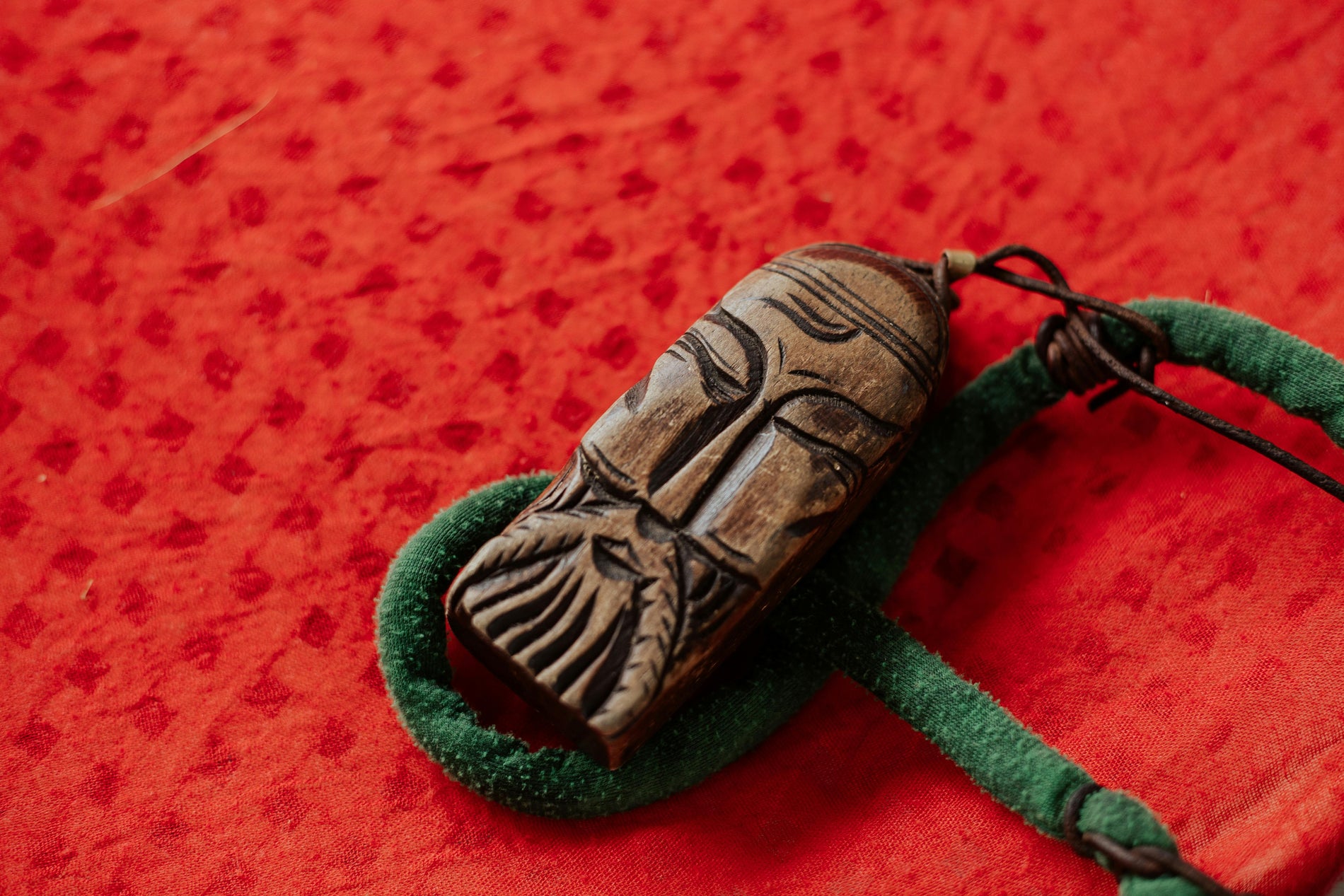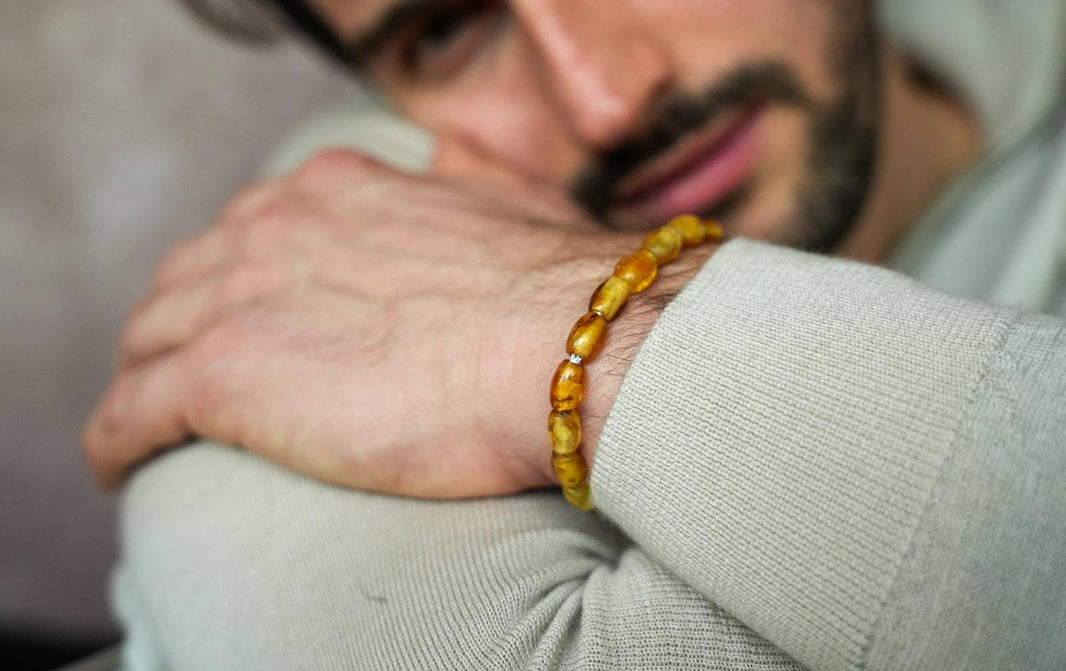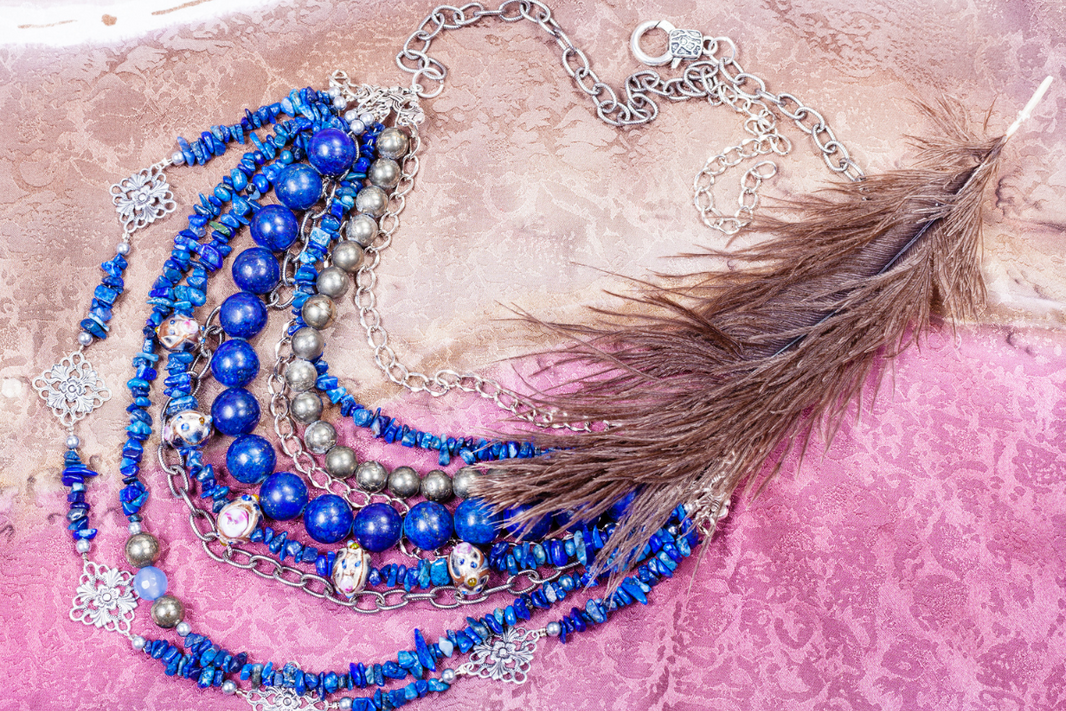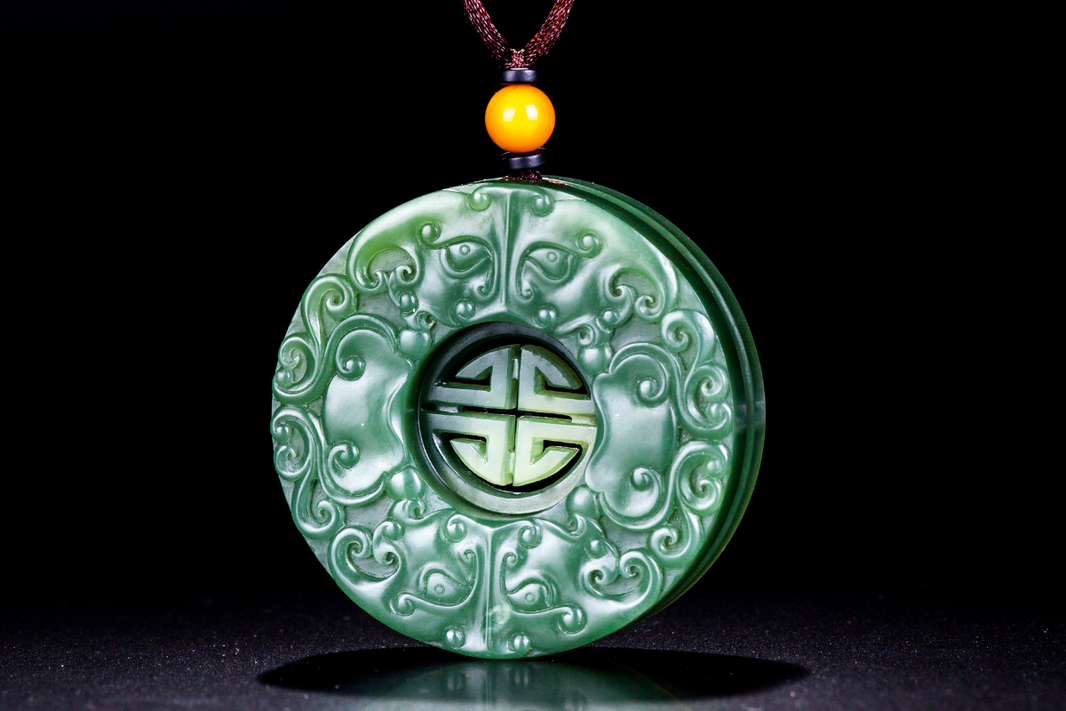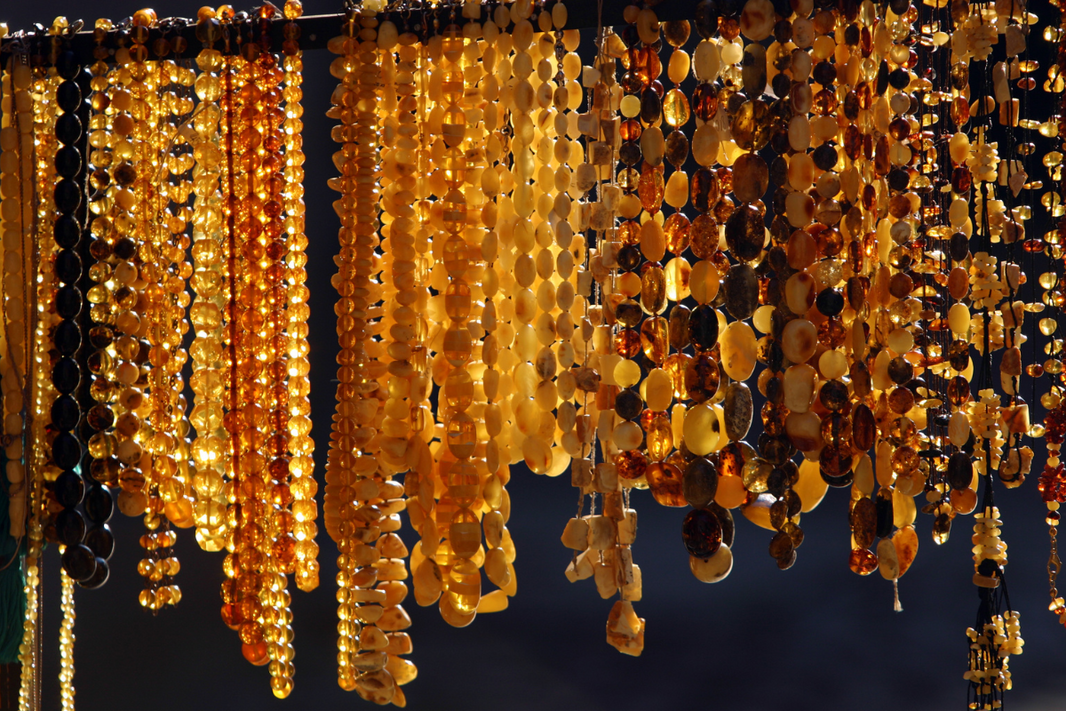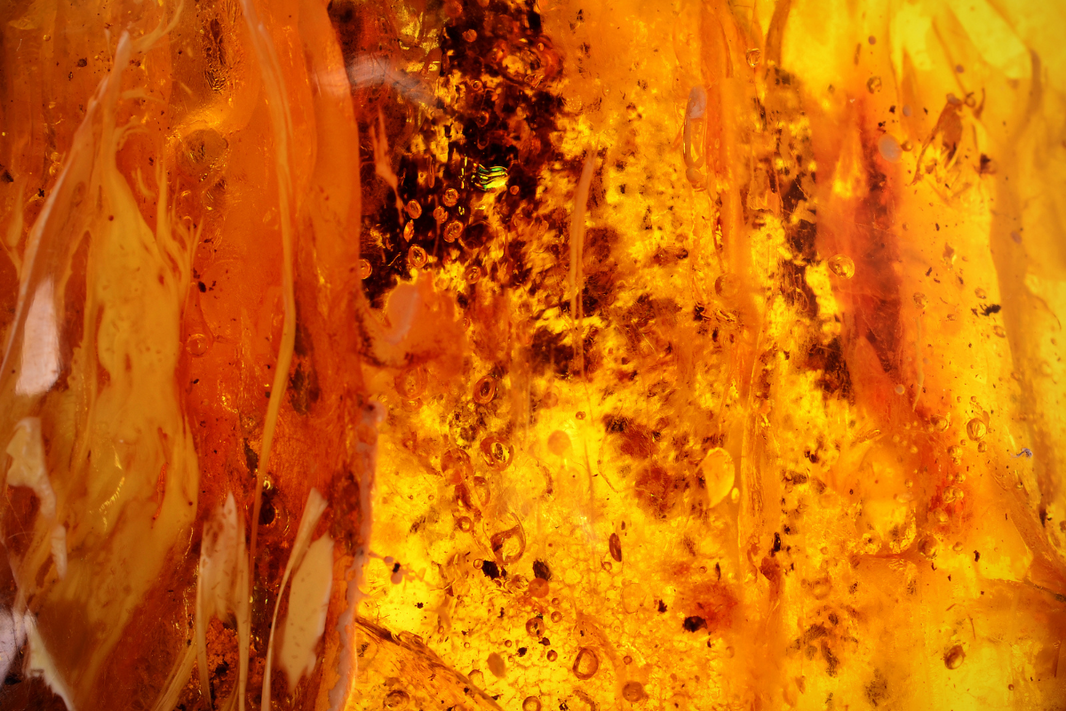An amulet is more than just an object; it's a symbol of power and protection, a shield against the unseen forces that may bring harm or misfortune.The earliest known amulet is believed to be a perforated bear tooth, found in a cave in the Altai Mountains of Siberia. We can’t know for sure what it meant to the wearer, but it must have had an important purpose. (You can learn more about the history of amulets on our blog).
In any event, amulets have been a part of human history for centuries, transcending cultures and civilizations. Worn close to the body, they serve as a testament to our innate desire for safety and the belief in the power of symbols to confer protection.
The Definition and Purpose of Amulets
An amulet, in its simplest form, is an object that is generally worn for protection. It is believed to confer protection upon its wearer, shielding them from various forms of harm. The use of amulets dates back to ancient times, with civilizations across the globe attributing significant power and protection to these objects.
The type and form of an amulet can vary greatly. Some may be ornate pieces of jewellery, while others may be simple stones or herbs. Regardless of their physical appearance, all amulets share a common purpose: to protect the wearer.
The belief in the protective power of amulets is not just a relic of the past. Even in our modern world, many people continue to wear amulets for their perceived protective properties. Whether it's a lucky charm carried in a pocket or a protective pendant worn around the neck, the use of amulets remains a widespread practice.
Amulets vs Talismans: Understanding the Difference
The terms 'amulet' and 'talisman' are often used interchangeably, but there is a subtle distinction between the two that is worth understanding. An amulet, as we've discussed, is generally worn for protection. It is believed to confer protection upon the wearer, shielding them from harm or negative energy.
A talisman is not just about protection. It is often associated with a specific power or attribute. For instance, a talisman might be used to enhance one's luck, courage, or wisdom. It's not just about warding off the bad, but also about attracting the good.
The form of an amulet or talisman can vary greatly. It could be an object like a piece of jewellery, a stone, or a symbol inscribed on a piece of parchment. The type of amulet or talisman one chooses to wear often depends on the specific protection or power they seek.
In the Roman world, amulets were often made of silver and inscribed with texts, earning them the name 'textual amulets'. These text amulets were believed to harness the power of the words they bore, providing protection or blessings to the wearer.
As societies evolved, so did the nature of amulets. The 'C amulet', a popular design in late antiquity, was a departure from the textual amulets of the Roman era. Its design was more abstract, reflecting the shift towards symbolism and away from literal interpretations.
Today, the history of amulets continues to evolve, with modern interpretations drawing on ancient traditions while incorporating contemporary aesthetics and beliefs. The enduring appeal of these pieces is a testament to their deep-rooted significance in human culture.
Near Eastern Amulets
The Near East, a cradle of ancient civilizations, has a rich history of using amulets as protective talismans. These amulets, often crafted with intricate designs and inscriptions, were believed to possess apotropaic magic, a power to ward off evil spirits and the evil eye.
The belief in the power of amulets was deeply rooted in the folk religion of these cultures. They were seen as potent tools to repel evil spirits, the evil eye, and other malevolent forces. The use of amulets was not limited to any particular class or group; they were used by everyone from kings to commoners.
One of the most famous Near Eastern amulets is the Seal of Solomon, believed to have the power to control demons and spirits. Another well-known amulet is the Saint Benedict medal, a Christian tradition, which is often used with holy water to ward off evil:
- Seal of Solomon: This is a significant Near Eastern amulet, often depicted as a hexagram or a five-pointed star. It's believed to have been the signet ring of King Solomon, granting him the power to command demons and spirits.
- Crescent Moon: Worn by Hebrews, this amulet was used for protection. The crescent moon symbolises the divine feminine and is often associated with fertility and rebirth.
- Cylinder Seals: Used by the Assyrians and Babylonians, these seals were embedded with precious and semi-precious stones, each carrying its own magical numbers and words. They were considered to be very powerful in warding off evil.
- Bull Amulet: This animal-shaped amulet was used for strength and virility. It was believed to provide protection and power to its wearer.
- Eye Amulets: These amulets, engraved with eyes, were used as a symbol of protection against evil spirits. They were commonly found on walls, tombs, utensils, and jewellery.
- Hand and Horn Symbols: For extra protection against the evil eye, hands and horns symbols were widely used on amulets. These symbols were believed to repel evil and bring good luck.
- Carnelian 'flame': In the Islamic world, this semi-precious stone was favoured for its protective properties. It was considered the stone of Muhammad, who was said to have worn a carnelian seal set in silver on his right hand.
Buddhist amulets, such as the block print amulet from Tibet or the rabbit foot from Thailand, are not just limited to these regions. They have a wide regional variation, reflecting the diversity of art and culture within Buddhism itself. Each amulet carries a unique story, a distinct meaning, and a specific purpose.
The role of these amulets extends beyond the realm of personal protection. They are also used in various Buddhist practices, rituals, and ceremonies. They serve as a physical representation of Buddhist teachings and principles, aiding in meditation and spiritual growth.
The Modern Use of Amulets
Amules, once used primarily for protection, have now become a staple in contemporary lifestyle. They serve as a bridge between the past and the present, merging tradition with modernity in a way that is both meaningful and stylish.
Amulets today are not just about warding off evil or attracting good fortune. They have become a symbol of personal expression, a fashion statement, a mindfulness tool, and even a social facilitator.
Many people wear talismans or charm bracelets adorned with precious stones or semiprecious materials. These pieces serve as a unique blend of style and symbolism, allowing the wearer to express their individuality and beliefs.
Amulets have found a place in the realm of mindfulness. Known as fidget jewellery, these pieces are designed to help the wearer focus their mind and reduce anxiety. The act of touching or playing with the amulet can provide a calming effect, making it a useful tool in today's fast-paced society.
Amulets today are not just worn for protection, but also as a means of connecting with the spiritual realm. They are seen as conduits, bridging the gap between the physical and metaphysical worlds. This belief stems from ancient traditions, where amulets were used to ward off evil spirits or attract positive energies.
Amulets also serve as social facilitators in modern times. They often spark conversations about spirituality, beliefs, and personal journeys, fostering a sense of community among those who wear them. This social aspect has contributed to the popularity of amulets in contemporary spiritual practices.
The Enduring Allure and Significance of Amulets
The fascinating world of amulets is a testament to humanity's enduring belief in the power of symbols and objects to confer protection and ward off evil. From ancient Roman amulets to modern charm bracelets, these artefacts serve as a bridge between the physical and spiritual realms, offering a tangible way to connect with the unseen forces that shape our lives.
In today's world, the use of amulets extends beyond their traditional religious and cultural contexts.
They have found a place in fashion and mindfulness practices, serving as a reminder of our inherent power and potential. Whether you wear an amulet for protection, good luck, or as a statement of personal style, these objects carry a rich history and deep significance that continues to resonate with people across cultures and generations.
So, as we navigate the complexities of modern life, let's not forget the ancient wisdom encapsulated in these small but potent symbols. After all, in the face of uncertainty and change, a little extra protection and good luck can go a long way.

